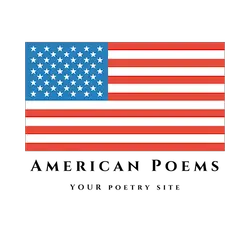“Form follows function follows form . . . , etc.”
–Dr. J. Anthony Wadlington
Here I am writing my first villanelle
At seventy-two, and feeling old and tired–
“Hey, Pops, why dontcha give us the old death knell?”–
And writing it what’s more on the rim of hell
In blazing Arizona when all I desired
Was north and solitude and not a villanelle,
Working from memory and not remembering well
How many stanzas and in what order, wired
On Mexican coffee, seeing the death knell
Of sun’s salvos upon these hills that yell
Bloody murder silently to the much admired
Dead-blue sky. One wonders if a villanelle
Can do the job. Granted, old men now must tell
Our young world how these bigots and these retired
Bankers of Arizona are ringing the death knell
For everyone, how ideologies compel
Children to violence. Artifice acquired
For its own sake is war. Frail villanelle,
Have you this power? And must Igo and sell
Myself? “Wow,” they say, and “cool”–this hired
Old poetry guy with his spaced-out death knell.
Ah, far from home and God knows not much fired
By thoughts of when he thought he was inspired,
He writes by writing what he must. Death knell
Is what he’s found in his first villanelle.

Hayden Carruth does an exquisite job of adding a modern twist to the villanelle in ,”Saturday at the Border”. Although in some sense he adheres to the traditional design of the form, his sometimes colloquial diction steers away from the formality of past villanelles. As with all villanelles, the repitions of specific phrases leads you to suspect that the poem must be taken beyond paraphrase, and there are also deliberate ambiguities that allow for multiple interpretations. Carruth correlates his first attempt at creating a villanelle with being “seventy-one, and feeling old and tired” and with “the old death-knell.” This could mean that either the fact that he is writing a villanelle in the first place is reason enough for impending doom, or that he is contemplating his own closeness to death. There is much play on his annoyance with writing a villanelle. The mention of hell once again suggests that the villanelle is a precursor to his own demise. Does he believe that he is on his way to hell or maybe in hell (figuratively speaking) at the time of writing? There is even more mention of his aversion to the villanelle; at this point it is beginning to seem almost as if he is obligated to write the poem. Is this a metaphor for fighting against death? Maybe he doesn’t want to die but he is hesitantly accepting the inevitable? The focus changes, but not entirely, when Carruth sends the message to our “young world” about other causes of the death-knell such as “the sun’s salvos” and the”dead-blue sky” and “bigots” and “bankers of Arizona.” Is this a reference to environmental issues and the abandonment of natural living for the acceptance of materialistic and superficial living? There are several messages to the young people of America that Carruth is trying to get across:1. A warning about ideologies having the ability to “compel children” to violence. 2. A suggestion that an ideology in itself is war because it is an overall fallacy. All the while, he portrays the villanelle as fragile, although the villanelle is usually viewed as powerful, in an attempt to vallidate his concerns further. If a sturdy villanelle cannot do the job, which forum will be effective? Carruth hints at having to parade himself around like some cheap lounge act even as he fears that young people will downplay the imperative message that he is trying to portray in the line where he states, “And must I go sell myself?” Only to be belittled and thought of as an “Old poetry guy with his spaced out death-knell.” In short, the poem ends with a rumination about “being far from home” and writing in a different place (mentally and physically) than when “he was inspired.” Instead, Carruth writes about a death-knell that is relevent in society today.Overall, Carruth utilizes the characteristics of the villanelle that are pertinent to such an intense message. The return to the death-knell is threatening enough to stir a reaction from the reader. At the same time, Carruth touches upon the gap that exists between the old and the young. Even as children, young Americans have the tendency to ridicule their “nagging elders.”